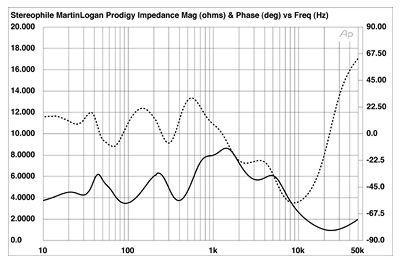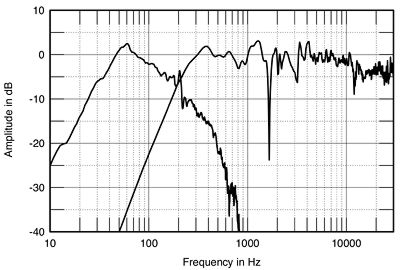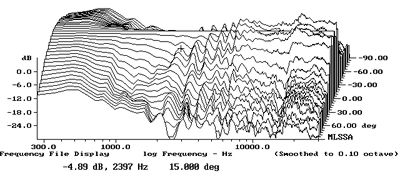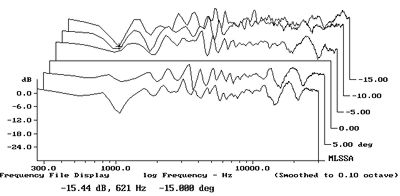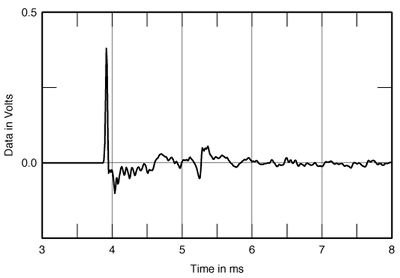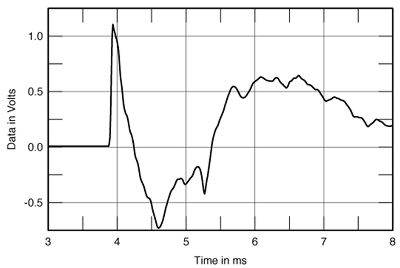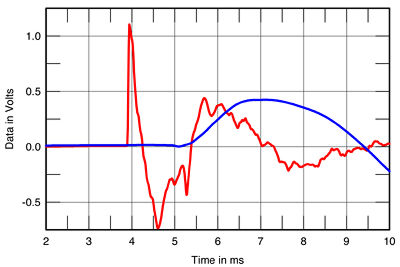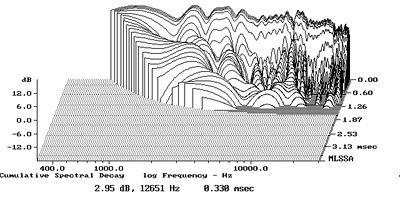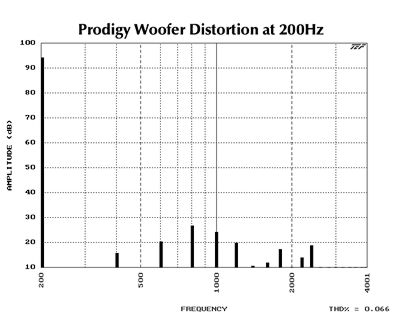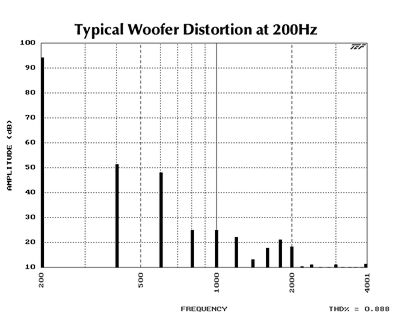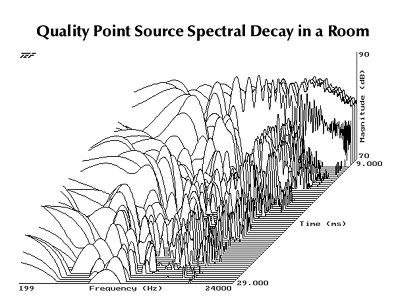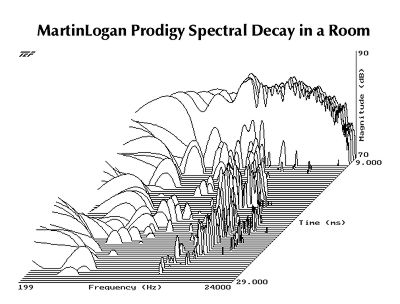

MartinLogan Prodigy loudspeaker
Larry Greenhill, July, 2001

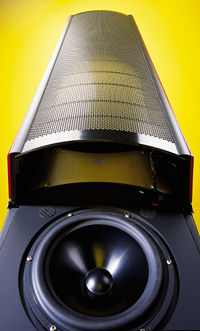 Take the Quad ESL-57 (footnote 1). Configured as a gnarly, stubby panel, it was often mistaken for an oversized space heater. Left on, it sucked up dust and grime as its panels filtered the air. Far worse, it arced—those flickering blue lights in the panel signaled diaphragm perforation and eventual destruction.
Take the Quad ESL-57 (footnote 1). Configured as a gnarly, stubby panel, it was often mistaken for an oversized space heater. Left on, it sucked up dust and grime as its panels filtered the air. Far worse, it arced—those flickering blue lights in the panel signaled diaphragm perforation and eventual destruction.
But the sound! When I sat in their tiny sweet spot, my ESL-57s had gobs of air, liquid transparency, neutrality, pinpoint imaging, lightning-fast transient response, wide and deep soundstaging, and low distortion, all with no listener fatigue. Their midrange—far more liquid and transparent than that of Quad's 1981 ESL-63, in my opinion—was the most natural I have heard from any loudspeaker, and justified the post-traumatic stress disorder my '57s caused me.
So I was both excited and uneasy when a review pair of MartinLogan's new hybrid Prodigys arrived in my listening room. I needn't have worried—Gayle Sanders, MartinLogan's president and chief designer, has spent his career making his electrostatic designs safe and reliable for audiophiles like me (see Wes Phillips' May 1997 interview with Gayle).
The Prodigy is imposing: 5' 7" tall, 16.5" wide, and more than 2' deep. Its two sections—the electrostatic panel and the chunky, back-busting bass module—couple to form a 133-lb unit. The Prodigy's technology—trickled down from the company's flagship, the $70,000/pair Statement Evolution2—includes a proprietary electrostatic transducer and a woofer array, called "ForceForward" by MartinLogan, that is intended to reduce bass room interactions and resonances. MartinLogan uses a proprietary manufacturing technique to curve the Prodigy's perforated, metal-framed panels into a "curvilinear line source" (CLS) transducer. This frees the loudspeaker from the narrow dispersion pattern common to most electrostatics.
MartinLogan's CLS screens are arc-proof. Sanders and his engineers determined that panel arcing was due to local buildup of charge from uneven coatings on the 0.0005"-thick polyester diaphragm. While other manufacturers hand-paint diaphragms with a conductive material, MartinLogan vapor-deposits the conductor as a 1-angstrom-thick (0.0000000001m) layer onto the diaphragm's surface. This process produces an optically transparent conducting layer with uniform characteristics of surface resistivity that prevent charge buildup and migration, and arcing. According to Sanders, this layer has the electrical surface conductivity of human skin, allowing it to hold a static charge of from 1500V to 3000V.
The Prodigy's diaphragm is sandwiched between perforated steel plates, called stators, that carry the varying audio-signal voltage while providing insulation to protect the user. A nylon-based powder insulation is deposited at very high temperatures on the perforated steel stators to provide a safety tolerance of 12kV. Fourteen evenly spaced ClearSpars, or horizontal Lexan insulators/spacers, subdivide the panel and create a uniform gap between the stators and the diaphragm. When the amplifier's audio signals are stepped up to high voltages by a transformer and applied to the stators, an electrostatic field of opposing voltages produces forward and backward movement of the diaphragm, which in turn generates sound waves in air.
One problem with electrostatic speakers has been the tendency of the charged membrane to collect dust. However, the Prodigy's diaphragm accumulates dust only slowly because it automatically shuts down its electrical field when no music is playing. When dust has accumulated, the manual advises the owner to leave the speaker unplugged for 12 hours, then vacuum the panels.
The Prodigy's second-order crossover switches the signal from the bass module to the electrostatic panel at 250Hz. It uses point-to-point wiring and physically separated high- and low-pass crossover circuits to reduce magnetic interaction. The panel driver's dual transformers are said to result in lower distortion and increased power handling.
Footnote 1: I found that the original Quad ESL-57 ("57" refers to the year of their design) sounded their best when driven by Mark Levinson ML-2 monoblocks, which cost $8000/pair in 1980. This classic solid-state amp was one of the few designs that remained in true class-A operation over its entire operational range into any load—including the Quad ESL-57's impedance of less than 1 ohm in the treble frequencies. Such inefficiency meant that the ML-2s put out 25W as audio and 300W as heat. Subjected to such constant cooking, early ML-2s suffered frequent output-transistor failure, pushing their owners further out on audio's bleeding edge.
